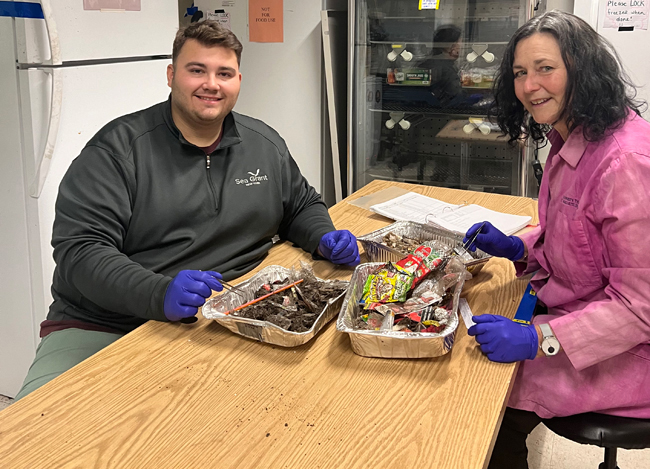New York Sea Grant opens regional office at RIT

New York Sea Grant (NYSG) has opened a satellite office at the Rochester Institute of Technology (RIT). Water quality research, education, and extension are the initial focus of this office. RIT and NYSG are partnering on three Sea Grant-funded water pollution-related projects underway. The new NYSG office at RIT is located at 10-A183 Ross Hall, 10 Lomb Memorial Drive, Rochester.
“New York Sea Grant is excited to expand our resident presence to Rochester to better engage local communities on water quality issues,” New York Sea Grant Associate Director Katherine Bunting-Howarth said. Bunting-Howarth is also Assistant Director of Cornell University Cooperative Extension in Ithaca.
Staffing the new NYSG office at RIT is NYSG Water Quality Specialist Jacob (Jake) Anderson. Anderson is working with an RIT interdisciplinary team that is studying the input, fate, and impact of plastic pollution in Lake Ontario. RIT Professor Christy Tyler, Ph.D. of the Thomas H. Gosnell School of Life Sciences leads this research and outreach effort with Matthew Hoffman, professor in the School of Mathematics and Statistics; Steven Day, head of RIT’s Department of Biomedical Engineering; Nathan Eddingsaas, associate professor in the School of Chemistry and Materials Science; and Andre´ Hudson, Dean of the College of Science.
“We are thrilled to partner with New York Sea Grant on these projects and to have Jake Anderson be part of our team. We now have the opportunity to develop local community-based solutions to pollution problems and to empower our youth to become active environmental stewards,” Dr. Tyler said.
Anderson, who joined New York Sea Grant’s Great Lakes program team in September, said, “I am excited to be part of New York Sea Grant, to partner with RIT faculty and students, and dive into this data-driven approach to promoting environmental stewardship at the municipal level, in schools, and with the general public,” Anderson said.
Anderson is assisting with the deployment of new trash-capture technology in the form of LittaTraps in the stormwater management systems in the Rochester region. The debris captured by the trapping is being analyzed to establish baseline data on the types and sources of the debris carried by stormwater to Lake Ontario.
A second effort is focused on the development of outreach and training materials to deliver messaging to public audiences about how to reduce aquatic debris. Local partners in this educational outreach include the Seneca Park Zoo Society, Rochester Museum and Science Center, the Water Education Collaborative, the City of Rochester and its Department of Recreation and Human Services, Monroe County and its Department of Environmental Services, Thomas P. Ryan Community Center, Edgerton Recreation Center, and Nativity Preparatory Academy. Trash-capture devices will be installed at each of these locations. Local youth will be engaged with collecting data and identifying sources and solutions to the problem of human-generated debris entering Rochester’s stormwater system and nearby waterways.
A third effort is focused on marine debris reduction education for grades K-12 and is led by team member Kaeti Stoss, an Environmental Education Specialist with RIT.
RIT also has two additional marine debris-related projects underway with funding from the National Oceanic and Atmospheric Administration (NOAA) Marine Debris Program.
New York Sea Grant (NYSG), a cooperative program of Cornell University and the State University of New York (SUNY), is one of 34 university-based programs under the National Oceanic and Atmospheric Administration’s National Sea Grant College Program.
Provided information


